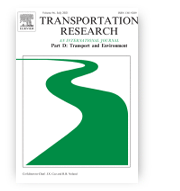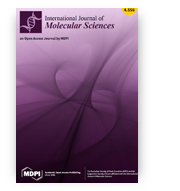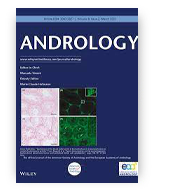Tire pressure remote monitoring system reducing the rubber waste
Bożena Szczucka-Lasota, Tomasz Węgrzyn, B. Łazarz, Joanna Kamińska
Transportation Research Part D-Transport and Environment
 The article presents the newly developed remote monitoring of tire pressure in the car fleet. The use of information from monitoring allows slowing down the tire wear process. The article presents the results of tests of tire pressure and friction wear of the tread made for the car fleet in which monitoring was used and for the fleet in which monitoring was not used. The research results show that the application of the decision-making process based on the results of monitoring allows reducing the amount of waste in the form of prematurely worn tires. The wear of monitored tires amounted to 7–13%, while the wear of unmonitored tires reached even 70%. Assuming that 50% of polish transport companies will effectively use the presented monitoring system, the reduction of generated rubber waste will amount to over 2000 tons less tire waste per year in Poland (Central Europe).
The article presents the newly developed remote monitoring of tire pressure in the car fleet. The use of information from monitoring allows slowing down the tire wear process. The article presents the results of tests of tire pressure and friction wear of the tread made for the car fleet in which monitoring was used and for the fleet in which monitoring was not used. The research results show that the application of the decision-making process based on the results of monitoring allows reducing the amount of waste in the form of prematurely worn tires. The wear of monitored tires amounted to 7–13%, while the wear of unmonitored tires reached even 70%. Assuming that 50% of polish transport companies will effectively use the presented monitoring system, the reduction of generated rubber waste will amount to over 2000 tons less tire waste per year in Poland (Central Europe).
DOI:10.1016/j.trd.2021.102987
Municipal Solid Waste Thermal Analysis—Pyrolysis Kinetics and Decomposition Reactions
Ewa Syguła, Kacper Świechowski, Małgorzata Hejna, Ines Kunaszyk, Andrzej Białowiec
Energies
 In this study, 12 organic waste materials were subjected to TG/DTG thermogravimetric analysis and DSC calorimetric analysis. These analyses provided basic information about thermochemical transformations and degradation rates during organic waste pyrolysis. Organic waste materials were divided into six basic groups as follows: paper, cardboard, textiles, plastics, hygiene waste, and biodegradable waste. For each group, two waste materials were selected to be studied. Research materials were (i) paper (receipts, cotton wool); (ii) cardboard (cardboard, egg carton); (iii) textiles (cotton, leather); (iv) plastics (polyethylene (PET), polyurethane (PU)); (v) hygiene waste (diapers, leno); and (vi) biodegradable waste (chicken meat, potato peel). Waste materials were chosen to represent the most abundant waste that can be found in the municipal solid waste stream. Based on TG results, kinetic parameters according to the Coats–Redfern method were determined. The pyrolysis activation energy was the highest for cotton, 134.5 kJ × (mol∙K)−1, and the lowest for leather, 25.2 kJ × (mol∙K)−1. The DSC analysis showed that a number of transformations occurred during pyrolysis for each material. For each transformation, the normalized energy required for transformation, or released during transformation, was determined, and then summarized to present the energy balance. The study found that the energy balance was negative for only three waste materials—PET (−220.1 J × g−1), leather (−66.8 J × g−1), and chicken meat (−130.3 J × g−1)—whereas the highest positive balance value was found for potato peelings (367.8 J × g−1). The obtained results may be applied for the modelling of energy and mass balance of municipal solid waste pyrolysis.
In this study, 12 organic waste materials were subjected to TG/DTG thermogravimetric analysis and DSC calorimetric analysis. These analyses provided basic information about thermochemical transformations and degradation rates during organic waste pyrolysis. Organic waste materials were divided into six basic groups as follows: paper, cardboard, textiles, plastics, hygiene waste, and biodegradable waste. For each group, two waste materials were selected to be studied. Research materials were (i) paper (receipts, cotton wool); (ii) cardboard (cardboard, egg carton); (iii) textiles (cotton, leather); (iv) plastics (polyethylene (PET), polyurethane (PU)); (v) hygiene waste (diapers, leno); and (vi) biodegradable waste (chicken meat, potato peel). Waste materials were chosen to represent the most abundant waste that can be found in the municipal solid waste stream. Based on TG results, kinetic parameters according to the Coats–Redfern method were determined. The pyrolysis activation energy was the highest for cotton, 134.5 kJ × (mol∙K)−1, and the lowest for leather, 25.2 kJ × (mol∙K)−1. The DSC analysis showed that a number of transformations occurred during pyrolysis for each material. For each transformation, the normalized energy required for transformation, or released during transformation, was determined, and then summarized to present the energy balance. The study found that the energy balance was negative for only three waste materials—PET (−220.1 J × g−1), leather (−66.8 J × g−1), and chicken meat (−130.3 J × g−1)—whereas the highest positive balance value was found for potato peelings (367.8 J × g−1). The obtained results may be applied for the modelling of energy and mass balance of municipal solid waste pyrolysis.
DOI:10.3390/en14154510
Microbial Synthesis and Evaluation of Fungistatic Activity of 3-Butyl-3-hydroxyphthalide, the Mammalian Metabolite of 3-n-Butylidenephthalide
Joanna Gach, Teresa Olejniczak, Piotr Krężel, Filip Boratyński
International Journal of Molecular Sciences
 Phthalides are bioactive compounds that naturally occur in the family Apiaceae. Considering their potentially versatile applications, it is desirable to determine their physical properties, activity and metabolic pathways. This study aimed to examine the utility of whole-cell biocatalysts for obtaining 3-butyl-3-hydroxyphthalide, which is the metabolite formulated during mammalian metabolism of 3-n-butylidenephthalide. We performed transformations using 10 strains of fungi, five of which efficiently produced 3-butyl-3-hydroxyphthalide. The product yield, determined by high-performance liquid chromatography, reached 97.6% when Aspergillus candidus AM 386 was used as the biocatalyst. Increasing the scale of the process resulted in isolation yields of 29–45% after purification via reversed-phase thin layer chromatography, depending on the strain of the microorganism used. We proposed different mechanisms for product formation; however, hydration of 3-n-butylidenephthalide seems to be the most probable. Additionally, all phthalides were tested against clinical strains of Candida albicans using the microdilution method. Two phthalides showed a minimum inhibitory concentration, required to inhibit the growth of 50% of organisms, below 50 µg/mL. The 3-n-butylidenephthalide metabolite was generally inactive, and this feature in combination with its low lipophilicity suggests its involvement in the detoxification pathway. The log P value of tested compounds was in the range of 2.09–3.38.
Phthalides are bioactive compounds that naturally occur in the family Apiaceae. Considering their potentially versatile applications, it is desirable to determine their physical properties, activity and metabolic pathways. This study aimed to examine the utility of whole-cell biocatalysts for obtaining 3-butyl-3-hydroxyphthalide, which is the metabolite formulated during mammalian metabolism of 3-n-butylidenephthalide. We performed transformations using 10 strains of fungi, five of which efficiently produced 3-butyl-3-hydroxyphthalide. The product yield, determined by high-performance liquid chromatography, reached 97.6% when Aspergillus candidus AM 386 was used as the biocatalyst. Increasing the scale of the process resulted in isolation yields of 29–45% after purification via reversed-phase thin layer chromatography, depending on the strain of the microorganism used. We proposed different mechanisms for product formation; however, hydration of 3-n-butylidenephthalide seems to be the most probable. Additionally, all phthalides were tested against clinical strains of Candida albicans using the microdilution method. Two phthalides showed a minimum inhibitory concentration, required to inhibit the growth of 50% of organisms, below 50 µg/mL. The 3-n-butylidenephthalide metabolite was generally inactive, and this feature in combination with its low lipophilicity suggests its involvement in the detoxification pathway. The log P value of tested compounds was in the range of 2.09–3.38.
DOI:10.3390/ijms22147600
Antioxidant effect of Elamipretide on bull's sperm cells during freezing/thawing process
Alicja Kowalczyk, Ewa Czerniawska-Piątkowska
Andrology
 Background: Spermatozoa are subjected to drastic changes in temperature, ice crystal formation, and diverse types of stresses (chemical, physical, osmotic, and oxidative) during the cryopreservation process, which severely compromise sperm quality and fertility. In this study, we aimed to investigate the protective role of Elamipretide in the cryopreservation of bull's spermatozoa. Materials and methods: The study included 36 healthy Simmental bulls with an average age of 2 ± 0.5 years housed individually in pens. Two ejaculates were collected from each bull using an artificial vagina at 7 a.m. Subsequently, the semen was extended with animal protein‐free commercial BIOXcell® extender (IMV Technologies) to a final concentration of 160 × 106 spermatozoa/ml, and rated in terms of motile sperm percentage, progressive motility, viability, and morphological abnormality of spermatozoa. Semen samples that showed more than 60% motility and 60% viability, were selected for the experiment. The fresh semen was then divided into five equal fractions. The first fraction was left for the control group (without Elamipretide), to the next were added in succession 0.1; 1; 5; and 10 μM of Elamipretide TFA (Trifluoroacetic) (MedChemExpress). After that semen was subjected to freezing and thawing. Next semen was assessed for motility, viability, mitochondrial membrane potential and acrosome integrity, and antioxidant activity (SOD, CAT, MDA). Results: It has been shown that a concentration of 5 and 10 μM proved to be the most effective in terms of tested parameters of the quality of sperm cells subjected to cryopreservation. Conclusion: In conclusion, addition of the Elamipretide to the cryopreservation extender significantly improved frozen‐thawed sperm cells quality and their function. The results of this study indicate that Elamipretide can be used as a cryoprotective agent to protect cells against the devastating effects of oxidative stress and increasing sperm survival after cryopreservation.
Background: Spermatozoa are subjected to drastic changes in temperature, ice crystal formation, and diverse types of stresses (chemical, physical, osmotic, and oxidative) during the cryopreservation process, which severely compromise sperm quality and fertility. In this study, we aimed to investigate the protective role of Elamipretide in the cryopreservation of bull's spermatozoa. Materials and methods: The study included 36 healthy Simmental bulls with an average age of 2 ± 0.5 years housed individually in pens. Two ejaculates were collected from each bull using an artificial vagina at 7 a.m. Subsequently, the semen was extended with animal protein‐free commercial BIOXcell® extender (IMV Technologies) to a final concentration of 160 × 106 spermatozoa/ml, and rated in terms of motile sperm percentage, progressive motility, viability, and morphological abnormality of spermatozoa. Semen samples that showed more than 60% motility and 60% viability, were selected for the experiment. The fresh semen was then divided into five equal fractions. The first fraction was left for the control group (without Elamipretide), to the next were added in succession 0.1; 1; 5; and 10 μM of Elamipretide TFA (Trifluoroacetic) (MedChemExpress). After that semen was subjected to freezing and thawing. Next semen was assessed for motility, viability, mitochondrial membrane potential and acrosome integrity, and antioxidant activity (SOD, CAT, MDA). Results: It has been shown that a concentration of 5 and 10 μM proved to be the most effective in terms of tested parameters of the quality of sperm cells subjected to cryopreservation. Conclusion: In conclusion, addition of the Elamipretide to the cryopreservation extender significantly improved frozen‐thawed sperm cells quality and their function. The results of this study indicate that Elamipretide can be used as a cryoprotective agent to protect cells against the devastating effects of oxidative stress and increasing sperm survival after cryopreservation.
DOI:10.1111/andr.12996
Sewage sludge and the energy balance of Jerusalem artichoke production - a case study in north-eastern Poland
Krzysztof Józef Jankowski, Bogdan Dubis, Marcin Kozak
Energy
 Sewage sludge is a specific by-product of wastewater treatment and its use as fertilizer is the most rational and the cheapest strategy for managing this waste product. In this study, the production of aerial biomass, energy inputs and the energy efficiency ratio of Jerusalem artichoke (JA) fertilized with sewage sludge at rates equivalent to 100 and 160 kg N ha−1 were evaluated in a field experiment conducted in north-eastern Poland in 2018-2020. In conventional treatments supplied with mineral fertilizer, energy inputs were determined at 23.5-28.1 GJ ha−1 in the year of plantation establishment and at 12.6-18.3 GJ ha−1 in the second and third year. In treatments fertilized with sewage sludge, the demand for energy was lower by 27-32% in the first year and by 48-54% in the second and third year. Regardless of fertilizer type the optimal nitrogen rate was 100 kg ha−1 (11.7-11.9 Mg ha−1 DM y−1). The biomass of JA plants supplied with 100 kg N ha−1 was also characterized by the highest energy output and energy gain. Energy gain was 5-11% higher per hectare, and the energy efficiency ratio was nearly twice higher in treatments supplied with sewage sludge than with mineral fertilizer.
Sewage sludge is a specific by-product of wastewater treatment and its use as fertilizer is the most rational and the cheapest strategy for managing this waste product. In this study, the production of aerial biomass, energy inputs and the energy efficiency ratio of Jerusalem artichoke (JA) fertilized with sewage sludge at rates equivalent to 100 and 160 kg N ha−1 were evaluated in a field experiment conducted in north-eastern Poland in 2018-2020. In conventional treatments supplied with mineral fertilizer, energy inputs were determined at 23.5-28.1 GJ ha−1 in the year of plantation establishment and at 12.6-18.3 GJ ha−1 in the second and third year. In treatments fertilized with sewage sludge, the demand for energy was lower by 27-32% in the first year and by 48-54% in the second and third year. Regardless of fertilizer type the optimal nitrogen rate was 100 kg ha−1 (11.7-11.9 Mg ha−1 DM y−1). The biomass of JA plants supplied with 100 kg N ha−1 was also characterized by the highest energy output and energy gain. Energy gain was 5-11% higher per hectare, and the energy efficiency ratio was nearly twice higher in treatments supplied with sewage sludge than with mineral fertilizer.
DOI:10.1016/j.energy.2021.121545









